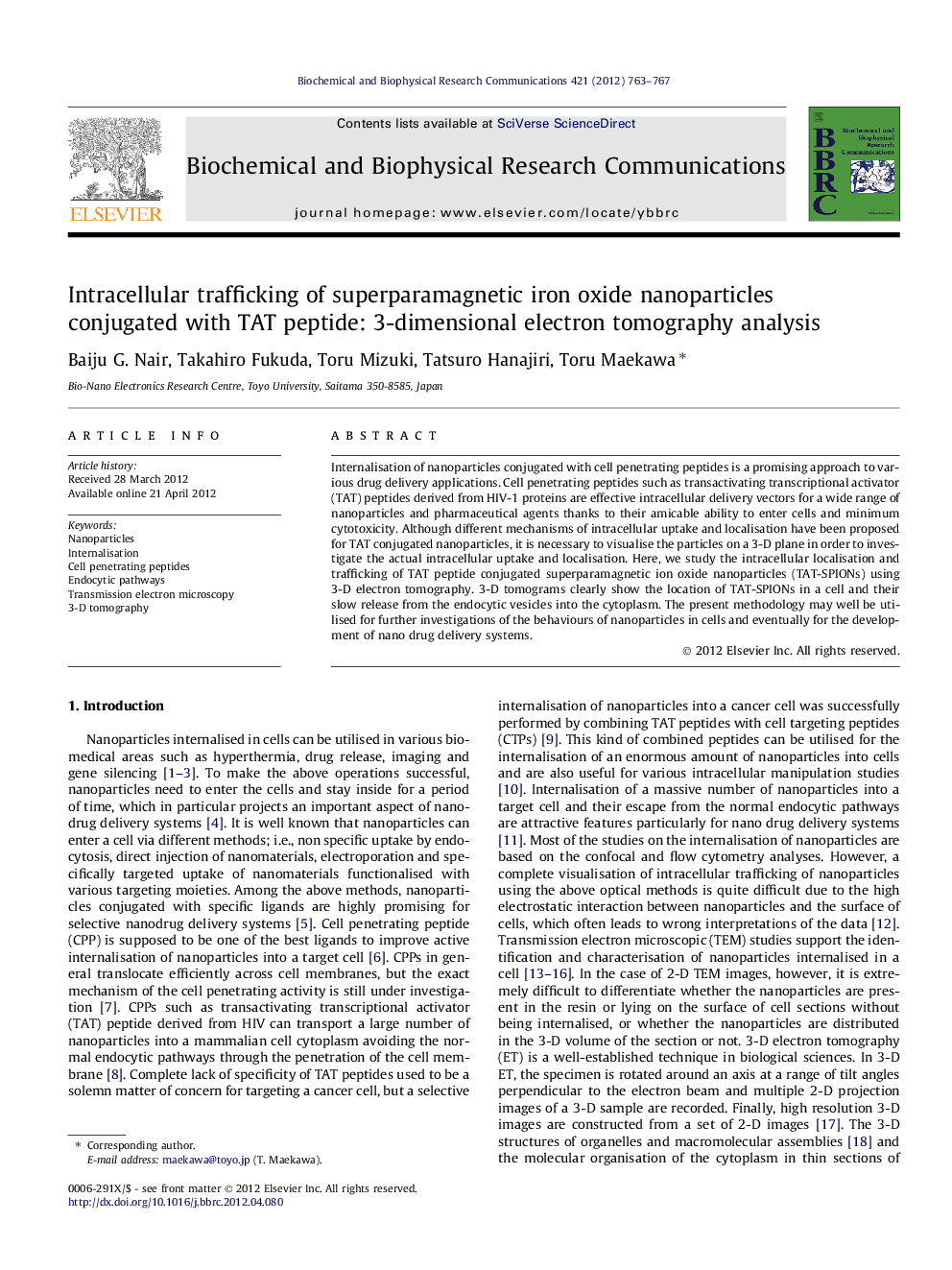| Article ID | Journal | Published Year | Pages | File Type |
|---|---|---|---|---|
| 1929769 | Biochemical and Biophysical Research Communications | 2012 | 5 Pages |
Internalisation of nanoparticles conjugated with cell penetrating peptides is a promising approach to various drug delivery applications. Cell penetrating peptides such as transactivating transcriptional activator (TAT) peptides derived from HIV-1 proteins are effective intracellular delivery vectors for a wide range of nanoparticles and pharmaceutical agents thanks to their amicable ability to enter cells and minimum cytotoxicity. Although different mechanisms of intracellular uptake and localisation have been proposed for TAT conjugated nanoparticles, it is necessary to visualise the particles on a 3-D plane in order to investigate the actual intracellular uptake and localisation. Here, we study the intracellular localisation and trafficking of TAT peptide conjugated superparamagnetic ion oxide nanoparticles (TAT-SPIONs) using 3-D electron tomography. 3-D tomograms clearly show the location of TAT-SPIONs in a cell and their slow release from the endocytic vesicles into the cytoplasm. The present methodology may well be utilised for further investigations of the behaviours of nanoparticles in cells and eventually for the development of nano drug delivery systems.
Graphical abstractFigure optionsDownload full-size imageDownload as PowerPoint slideHighlights► We study the intracellular localisation of TAT-SPIONs using 3-D electron tomography. ► 3-D images of TAT-SPIONs in a cell are clearly shown. ► Release of TAT-SPIONs from endocytic vesicles into the cytoplasm is clearly shown.
